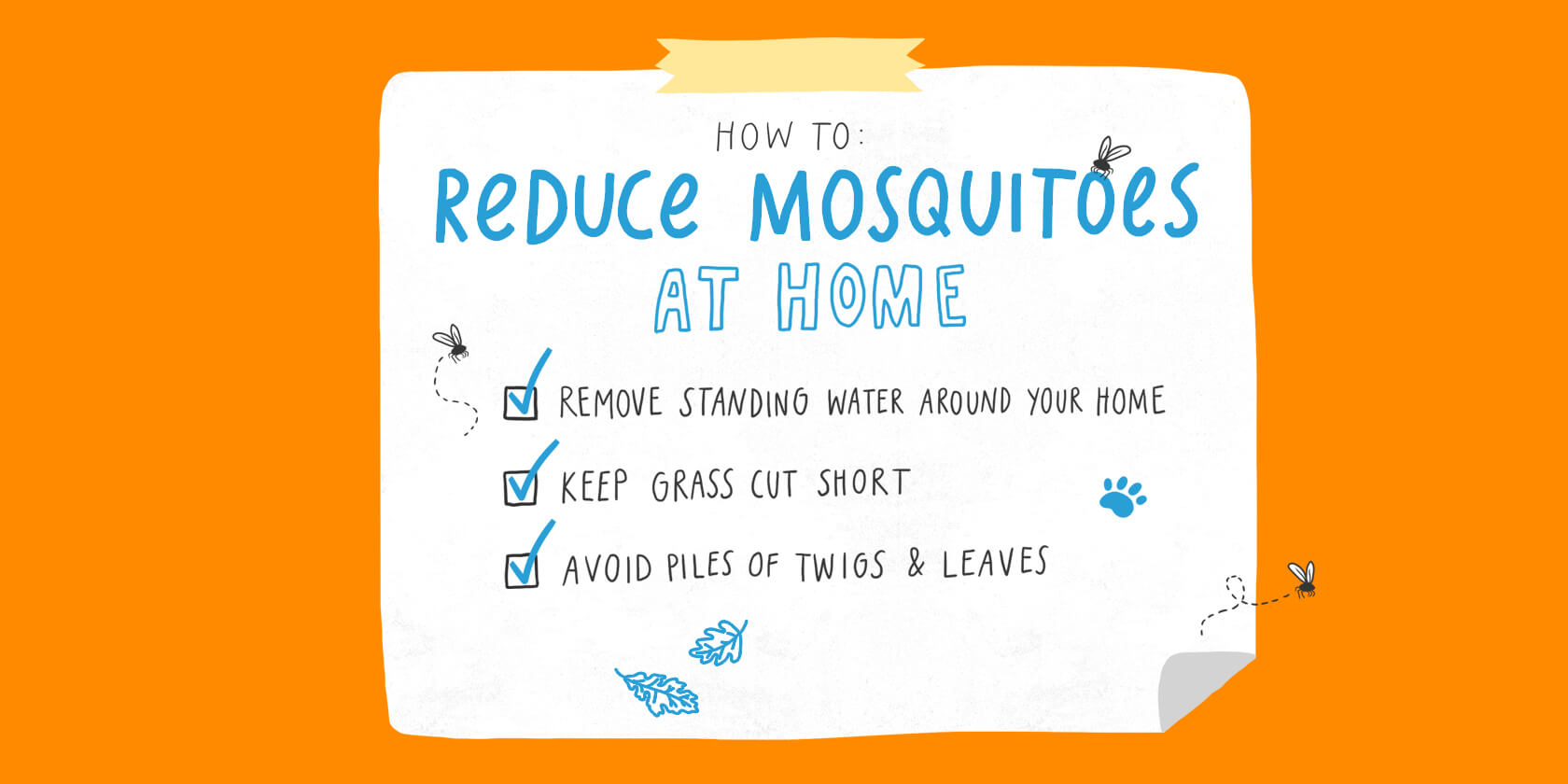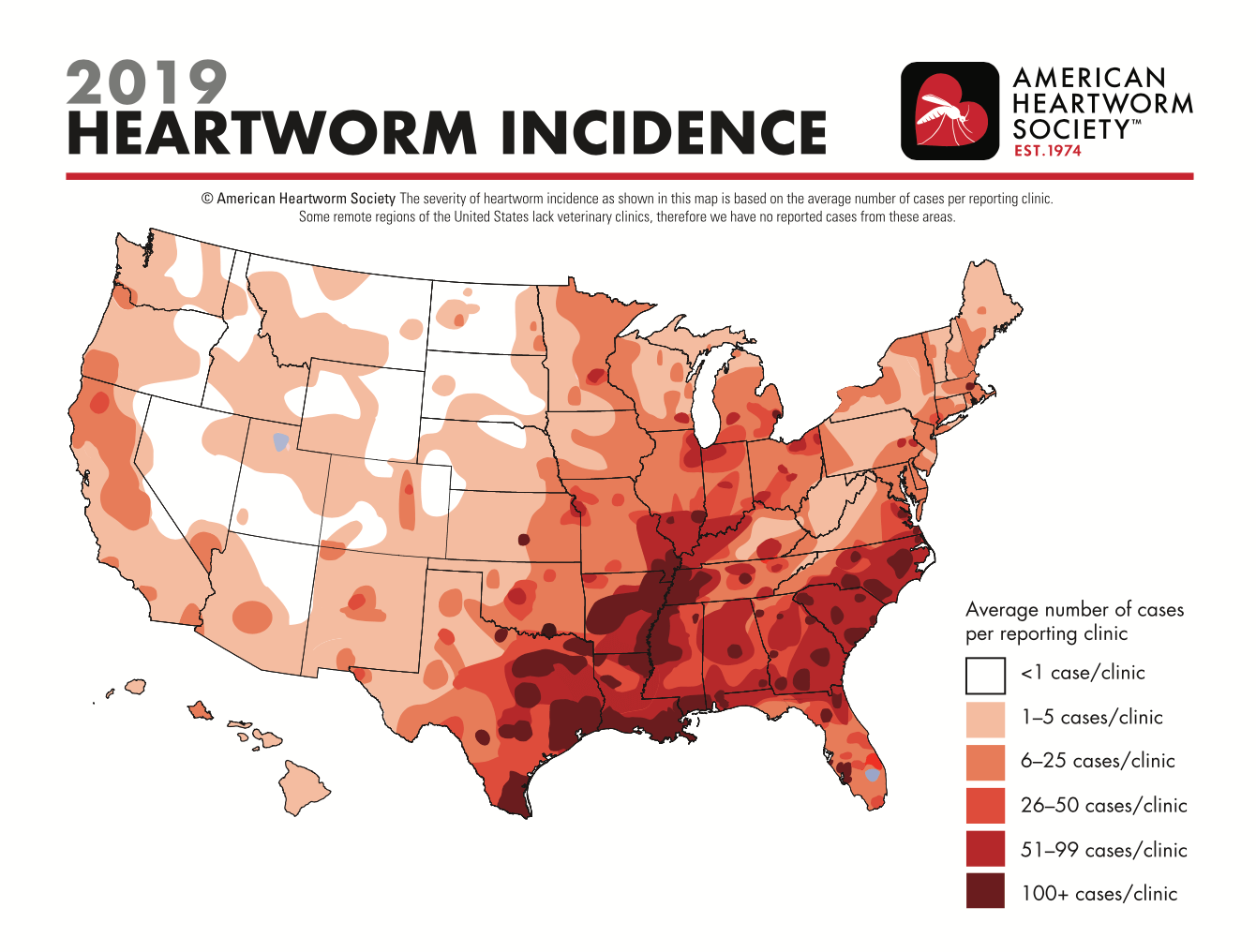Warmer weather is coming, meaning longer days and mosquito bites. Mosquitoes don’t just annoy and pass diseases, like Zika and West Nile, to humans — they can infect cats and dogs with heartworms, a potentially deadly parasite.
Because it can take just one infected mosquito biting your pet to cause a debilitating heartworm infection, take the following steps to help protect your pets.
Heartworm Disease Is Easily Preventable
Even indoor-only pets are at risk for heartworm infection since mosquitoes can find their way inside the home. Once an infected mosquito bites your pet, there’s only one thing that can prevent that bite from transmitting heartworm—a heartworm preventative medication that you (hopefully) have all your pets on. There are both oral and topical heartworm preventative options for cats and dogs. For dogs, there’s also an option of 6 months of continuous protection with a single, convenient injection from your veterinarian.
Every pet and every situation is different, so be sure to talk to your vet about which options are best for your pets.
Reduce the Number of Mosquitoes Biting Your Pets
While it’s impossible to prevent mosquitoes from finding us, these are some tips that can help reduce the number of bites your pet gets.

Remove Standing Water From Around Your Home
Mosquitoes lay their eggs on stagnant water, and larvae can hatch in as little as one inch of standing water. So, where there’s standing water, there is a good chance mosquitoes will lay their eggs (think empty flower pots, birdbaths, pool covers, and even bottle caps). You can help control the population of mosquitoes around your home by dumping any standing water, aerating the water in your birdbath, and skimming your pool daily if you have one.
Make Your Yard Uninviting for Mosquitoes
As the weather heats up, mosquitoes will find places in your yard that are inviting to hang out and cool off, like piles of twigs and leaves or overgrown grass[1]. Clearing these piles of vegetation and keeping your grass cut short provides fewer places for mosquitoes to lay in and wait to bite you when the weather cools off in the evening.
Mosquito Repellent
If you’re spending time outdoors with your pets, don’t use bug spray designed for humans on them — these repellents frequently contain chemicals that could be harmful to your pet. There are a few mosquito-repellent products, like collars, that can be used on dogs. However, repellent products, like collars, should not be used alone without the use of a heartworm protective product. Also, be sure the product you select is appropriate for your type of pet (i.e. a cat product for a cat).
What You Need to Know About Heartworms
Heartworms are serious and potentially deadly parasites that live in the bloodstream and are passed along to your pet through bites from infected mosquitoes. Baby heartworms are passed to your pet when a mosquito bites. Adult heartworms can grow into foot-long worms that infect the heart, lungs, and arteries, causing severe lung and heart disease and damage to other organs in the body[1].
Cats
In cats, heartworms less frequently grow into adults, BUT it only takes 1 or 2 adult heartworms to cause severe damage and even death in a cat[2]. Most times, there are no symptoms associated with a heartworm infection in a cat. Sometimes an infected cat may vomit, cough, or have a reduced appetite, while other times the only sign you’ll see is sudden death[2].
Dogs
Dogs are a natural host for heartworms, meaning baby heartworms commonly mature into adult heartworms. Heartworm disease causes damage to a dog’s heart, lungs, and arteries that can last long after the heartworms are gone. Dogs infected with heartworms can show symptoms such as a cough or tiredness after activity[3]. It’s important to get your dog tested for heartworms annually. In some cases, testing needs to be more frequent to properly detect this potentially fatal disease[3].
Heartworm Treatment
Cats
There are currently no safe and effective treatments available for cats with heartworm disease. The only way to truly protect your cat from heartworm disease is to make sure their parasite preventative also protects against heartworms and to keep them on it throughout the year. Given the seriousness of heartworm disease in cats, even indoor-only cats should receive parasite preventatives throughout the year. Talk to your vet about which heartworm preventative option is right for your cat.
Dogs
There are effective treatments for dogs with heartworm disease, but treatment is complicated with many months of crate rest, and there are risks of complications depending on the damage already done. And, treatment can come at considerable costs. Prevention is the best option, so talk to your vet about the best heartworm preventative medication for your dog[3].
How Prevalent Are Heartworms in Your Area?

This map from the American Heartworm Society shows heartworm incidence rates across the United States[4]. Even if the maps shows you live in an area with a low concentration of reported heartworm infections, it’s important to keep your pet on heartworm medication to minimize their risk. Incidence rates fluctuate from year to year, and this map underestimates the true incidence of heartworm disease in the country.
Your veterinarian knows the best way to protect your pets in your area. So be sure to talk to them about the heartworm preventative options that are best for your cats and dogs.
ZPC-00235R1
- Wayne J. Crans (1989). Proceedings of the Eighty-Second Annual Meeting of the New Jersey Mosquito Control Association. pp. 53–57. http://vectorbio.rutgers.edu/outreach/restbox.htm Accessed March 11, 2019.
- Heartworm in cats. American Heartworm Society. Available at https://www.heartwormsociety.org/heartworms-in-cats. Accessed March 11, 2019.
- Keep the Worms Out of Your Pet’s Heart! The Facts about Heartworm Disease. FDA. https://www.fda.gov/animalveterinary/resourcesforyou/animalhealthliteracy/ucm188470.htm. Accessed March 11, 2019.
- Heartworm incidence maps. American Heartworm Society. Available at https://www.heartwormsociety.org/pet-owner-resources/incidence-maps. Accessed March 11, 2019.





